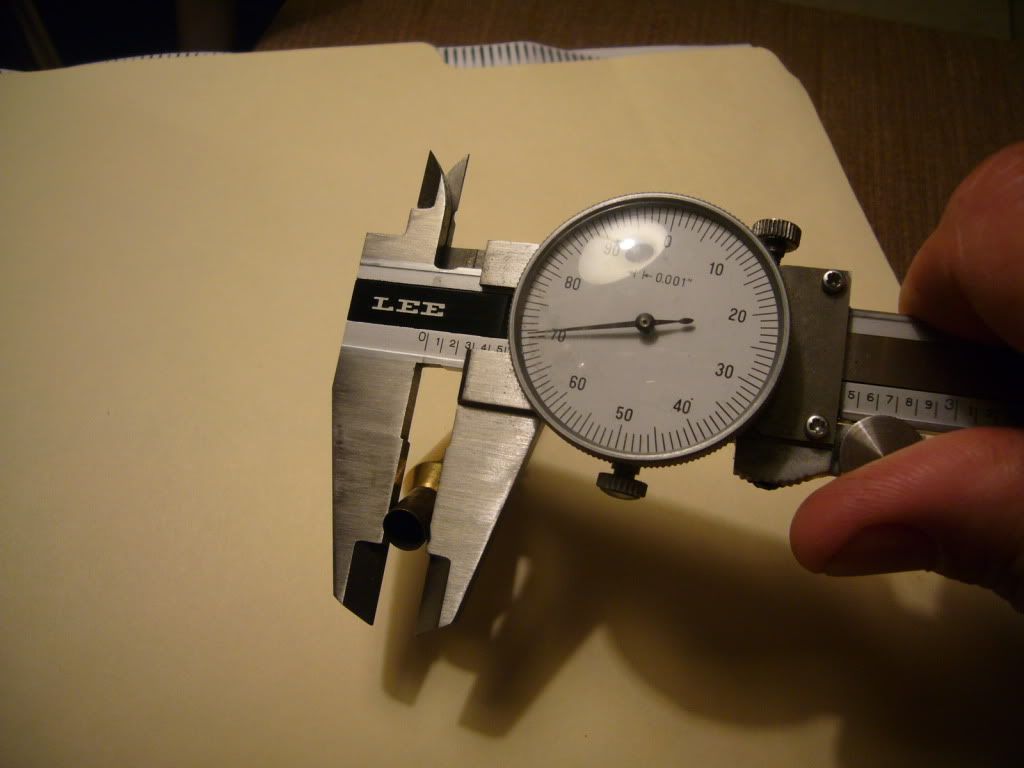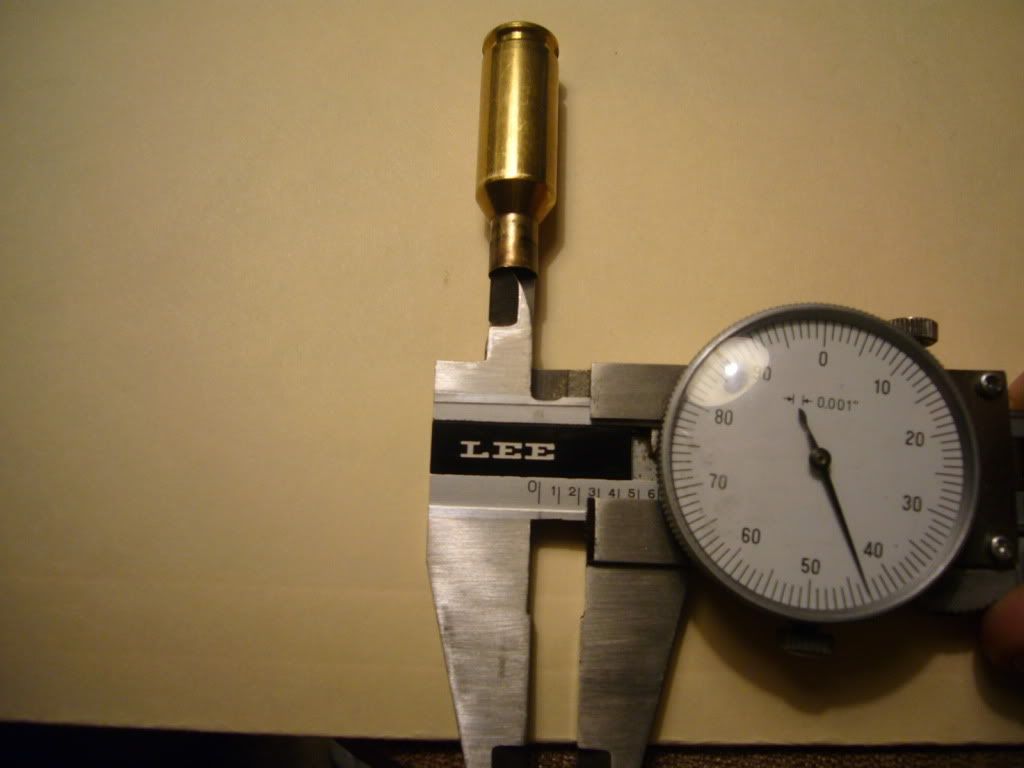G
Glenn Bruce
Guest
I'm helping a buddy with the used 6BR he's got.
We're seeing some things that look strange to me. I've loaded for a few years, but I'm no expert. This 6 BR has me confused.
Look at these pictures, is this a really tight chamber that was built with the intent that the necks would be turned? These are measurement taken from a fired case!
The gun came with Redding F.L. Dies, after sizing the brass, the inner neck measures .233'', that seems too tight?


We're seeing some things that look strange to me. I've loaded for a few years, but I'm no expert. This 6 BR has me confused.
Look at these pictures, is this a really tight chamber that was built with the intent that the necks would be turned? These are measurement taken from a fired case!
The gun came with Redding F.L. Dies, after sizing the brass, the inner neck measures .233'', that seems too tight?



